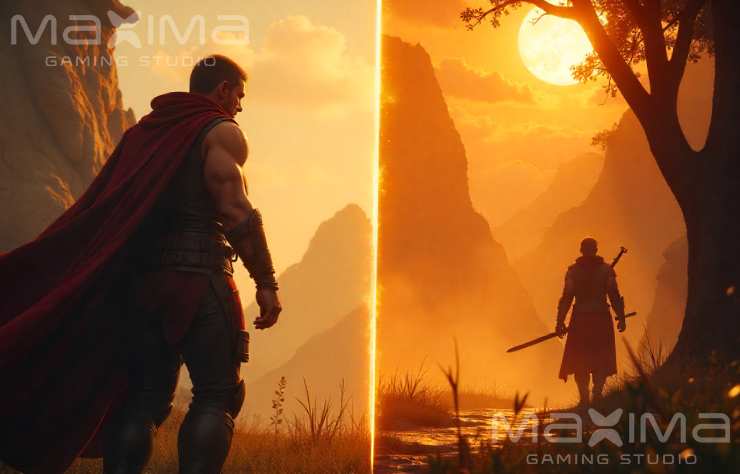 September 5, 2025
September 5, 2025
When we think about storytelling in games, we often focus on the plot, dialogue, and characters. But one of the most powerful — and sometimes overlooked — tools is the camera angle. Just like in movies, the camera in a video game shapes how players perceive emotions, experience action, and connect with the story.
In this article, we’ll explore why camera angles matter in game storytelling, how they influence player psychology, and examples of their use across genres.
Why Camera Angles Are Important in Games
Unlike films, video games give players agency — they control what happens. But camera direction helps developers subtly guide focus while keeping immersion intact. Camera choices:
- Set the tone (cinematic, dramatic, or casual)
- Highlight emotions (showing fear, victory, or intimacy)
- Control pacing (fast cuts for action, slow pans for drama)
- Enhance immersion (placing the player in the right perspective)
In short, camera angles act as a storytelling partner that silently narrates without words.
Common Camera Perspectives & Their Storytelling Impact
1. First-Person Camera
- Puts players directly into the character’s shoes.
- Great for immersive storytelling (e.g., Half-Life, Call of Duty).
- Every action feels personal, making emotional choices more impactful.
2. Third-Person Camera
- Lets players view their character and surroundings.
- Works well for emotional storytelling (The Last of Us, Uncharted).
- Over-the-shoulder shots emphasize relationships and environmental storytelling.
3. Top-Down & Isometric Angles
- Used in strategy and RPG games (Diablo, Baldur’s Gate).
- Emphasizes control, tactics, and overview rather than personal emotion.
- Good for storytelling that’s world-driven rather than character-driven.
4. Cinematic Cutscenes
- Developers use movie-like camera angles to dramatize events.
- Dutch angles (tilted shots) for tension, close-ups for intimacy, wide shots for scale.
- Bridges gameplay with narrative progression.
5. Dynamic Cameras
- Modern games use adaptive cameras that change during gameplay.
- Example: God of War (2018) uses a “one-shot” camera style with no cuts, creating an unbroken narrative experience.
How Camera Angles Affect Player Emotion
- Low Angles: Make characters look powerful and intimidating.
- High Angles: Make characters look vulnerable or weak.
- Close-Ups: Build intimacy, showing emotion in detail.
- Wide Shots: Emphasize scale, loneliness, or epic journeys.
For example, in a horror game, the camera may deliberately limit visibility to create fear, while in an adventure game, sweeping landscapes inspire awe.
Challenges in Camera Storytelling
- Player Freedom vs. Director Control Balancing interactivity with cinematic control.
- Technical Limitations Ensuring cameras don’t clip through walls or ruin immersion.
- Accessibility Giving players camera control (invert Y-axis, sensitivity) while still maintaining narrative intent.
The Future of Game Camera Design
- AI-Powered Cameras: Adjust dynamically to player style and choices.
- VR/AR Storytelling: First-person immersion becomes the default, demanding new ways to guide player focus.
- Cinematic Game Engines: Tools like Unreal Engine 5 allow more movie-like camerawork for real-time storytelling.
Final Thoughts
In modern game development, camera angles are more than technical design — they are narrative tools. By carefully using perspectives, close-ups, and dynamic movements, developers can guide emotions, enhance immersion, and tell unforgettable stories.
The next time you play your favorite game, notice how the camera moves. Chances are, it’s silently telling you part of the story.


